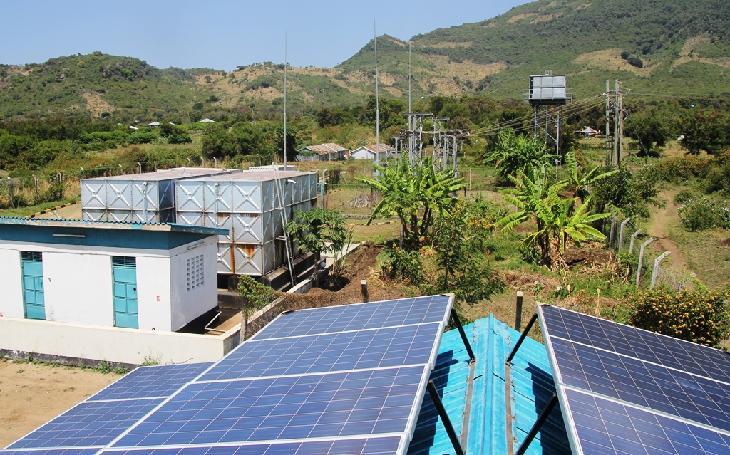
On paper, Somalia appears to be a country perfectly positioned to utilize renewable energy sources. A recent study from the African Development Bank confirmed that it actually has the highest resource potential of any African nation for onshore wind power, capable of generating between 30,000 to 45,000 MW. Solar power can also be implemented to tremendous effect, possibly generating upwards of 2,000 kWh/m2.
For all of the metrics that suggest Somalia is an ideal country to incorporate renewable energy solutions though, there is a myriad of overwhelming issues standing in the way: limited regulation and oversight of the sector, certain areas are held back by monopoly distribution control, a shortage of qualified staff, generation and distribution losses created by poor infrastructure and collection, insecurity and political instability, and higher electricity tariffs than neighboring nations.
Mike Douglas, the CEO of SKA International, explains how rural Somalian communities can be positively influenced by tapping into renewable energy solutions.
Economic Encouragement
Multiple studies have proven that access to electricity has increased agricultural and manufacturing productivity, while also presenting opportunities for new business creation. New access to electricity in South Africa resulted in the creation of micro, small, and medium enterprises.
Rather than pursuing large-scale infrastructure projects that generally force countries to incur problematic costs and future debts, the region of Somalia is committed to developing at a comfortable pace, Mike Douglas notes. With this approach and smart investments in the energy sector, Somalia can continue to bolster its reputation of excellent entrepreneurship and business-backed development.
Additionally, access and affordability of sustainable electricity will assist the country in addressing poverty, as household incomes will see a natural increase. Having access to lighting, residents could extend their working days, increase productivity and perhaps become more motivated to establish a home business. In 2005, the United Nations Development Programme (UNDP) reported that rural electrification in Mali was responsible for a $0.32 increase in daily income and led to the average annual income of women climbing by $68. Enhanced household income can then be beneficial in combatting poverty. Tanzania, for example, experienced reduced household poverty by 4 to 13% because of access to electricity.
Delivering Essential Services
Much of the Somali economy’s long-term prospects largely depend on the supplying of basic services including education, health care, water, and sanitation. Reliable, renewable, and affordable electricity is crucial in securing the provision of these services.
By amplifying the number of hours students have to study and providing access to the internet, electricity can be pivotal in improving educational outcomes Mike Douglas of SKA International says. Nepal confirmed better literacy rates by 11% after communities were granted an extension in electrical services.
Security services would also benefit from a stable source of electricity in multiple avenues: lighting streets at night can enable police stations and checkpoints to perform their duties; citizens may charge their cell phones to contact emergency services swiftly; computerized records would be implemented, and detention facilities could be afforded sufficient lighting. Street lighting allowed Senegal’s communities to remain upbeat and safer during the night hours.
Several Somali cities, such as Mogadishu, Beledweyne, Bal’ad, Jowhar, Kismayo and Galkayo, have received newly installed solar street lighting, a development ensured through assistance from the Nordic International Support (NIS) Foundation. Areas that were previously unsafe are now crowded by people at night-time.
Renewable Energy is a Financially Viable Source, Says Mike Douglas
Wind and solar energy, widely at one’s disposal in the Somali region, are being recognized as smart options financially, Mike Douglas states. Other sources like diesel are more costly and technological innovations are turning renewable energy into a truly attainable alternative.
A few factors have pushed renewable energy costs down significantly in the past few years: efficiency has improved and, combined with the lessened financing expenses, it decreased the prices for solar photovoltaic (PV) modules by more than 50% between 2008 and 2011; technological advancements are producing future projections that are acceptable; global prices for wind turbines are down since peaking in 2008, and the costs of importing renewable energy into the Somali region are also plunging.
While diesel generators bring a lower initial capital cost than that of systems powered by wind or solar energy in the Somali region, renewable energy is the more sensible option for investment in the future, says Mike Douglas of SKA International. According to the Somaliland government, the net revenue from wind systems surpasses the diesel method’s totals by the third year, solidifying the case to utilize both wind and solar forces to a greater extent.


